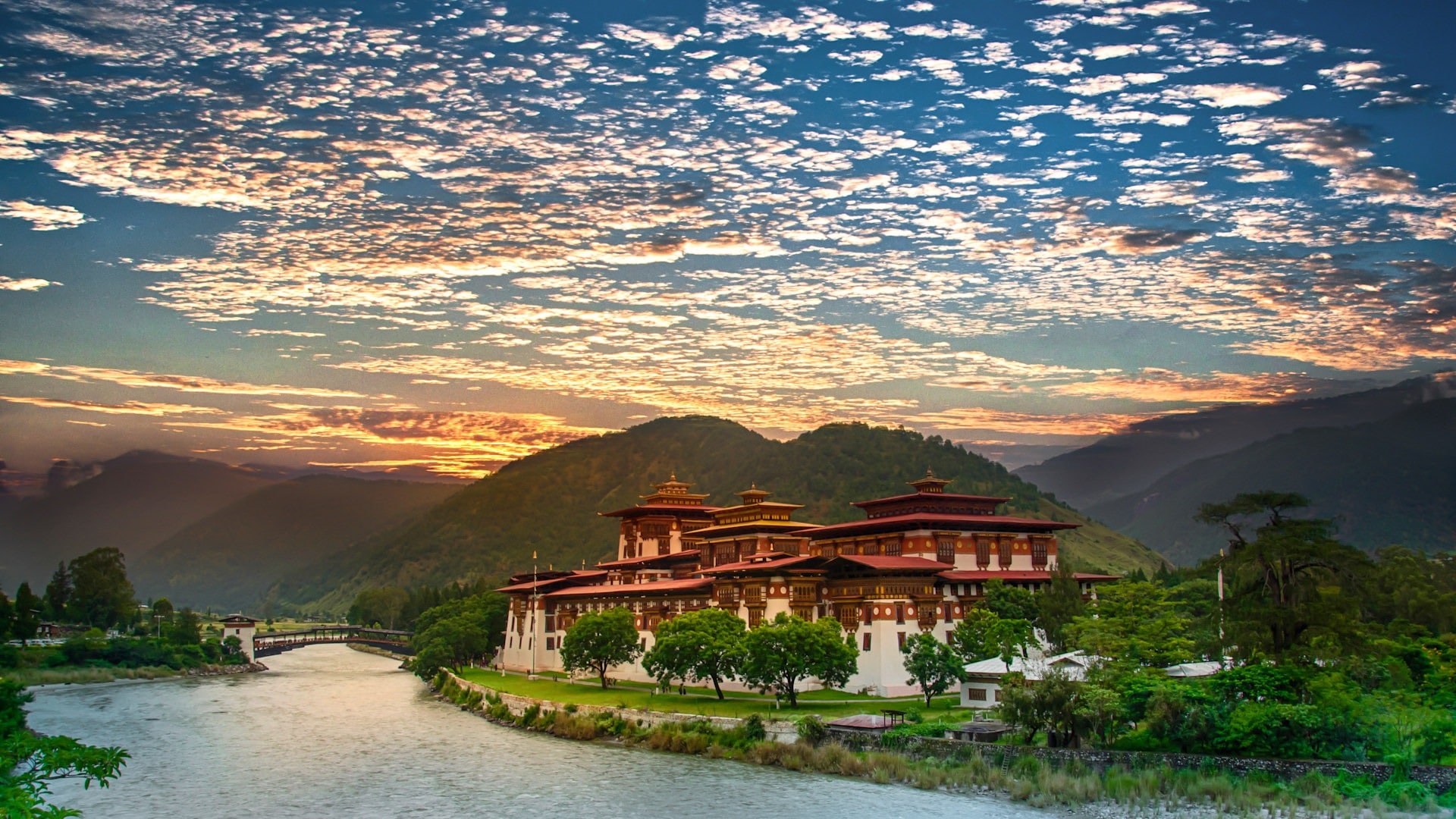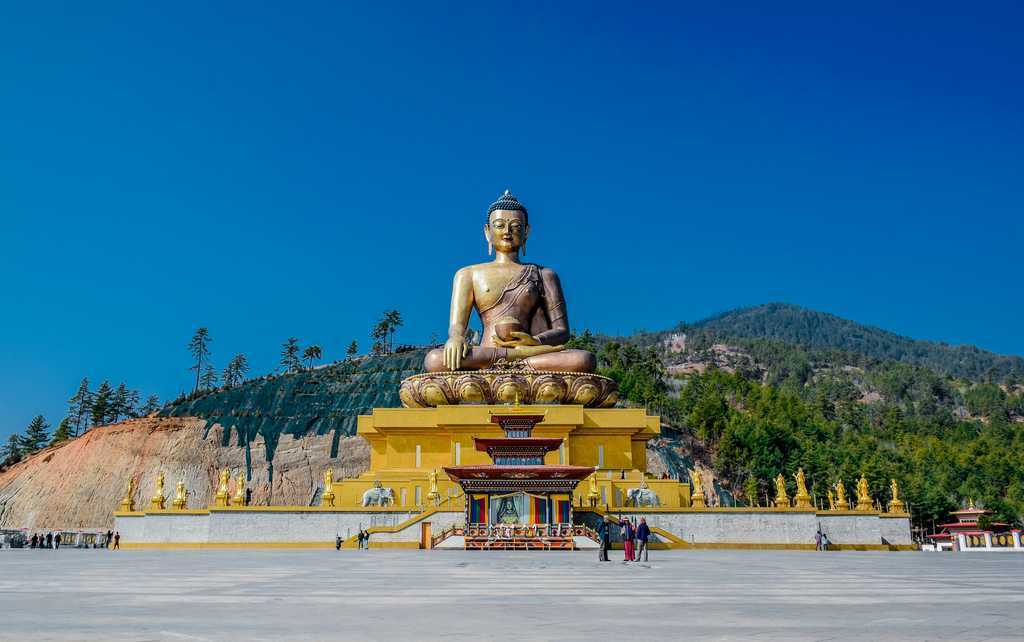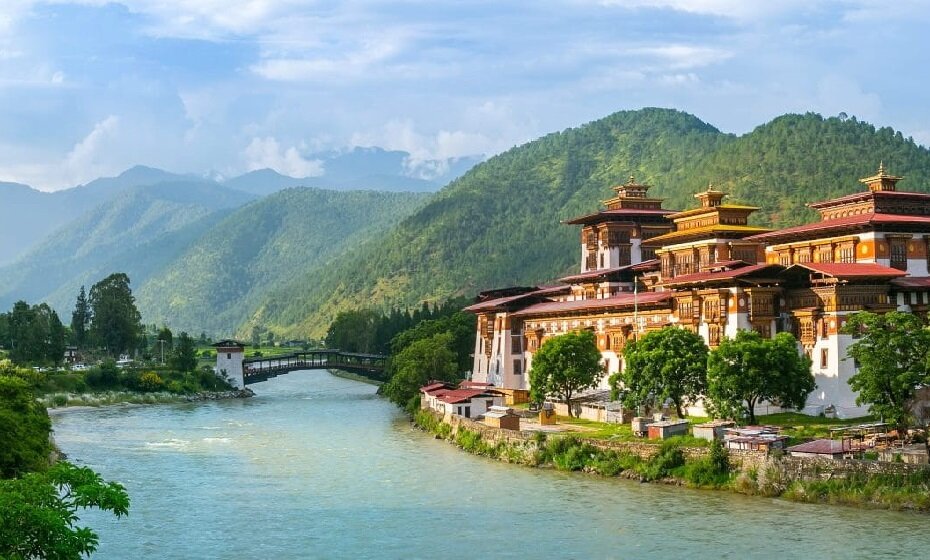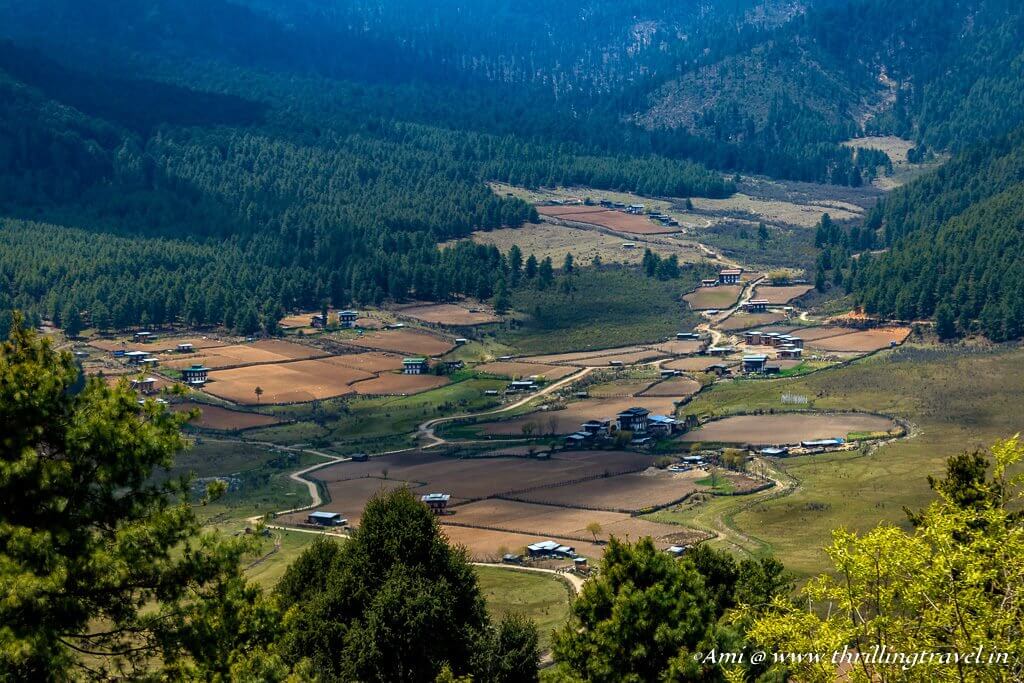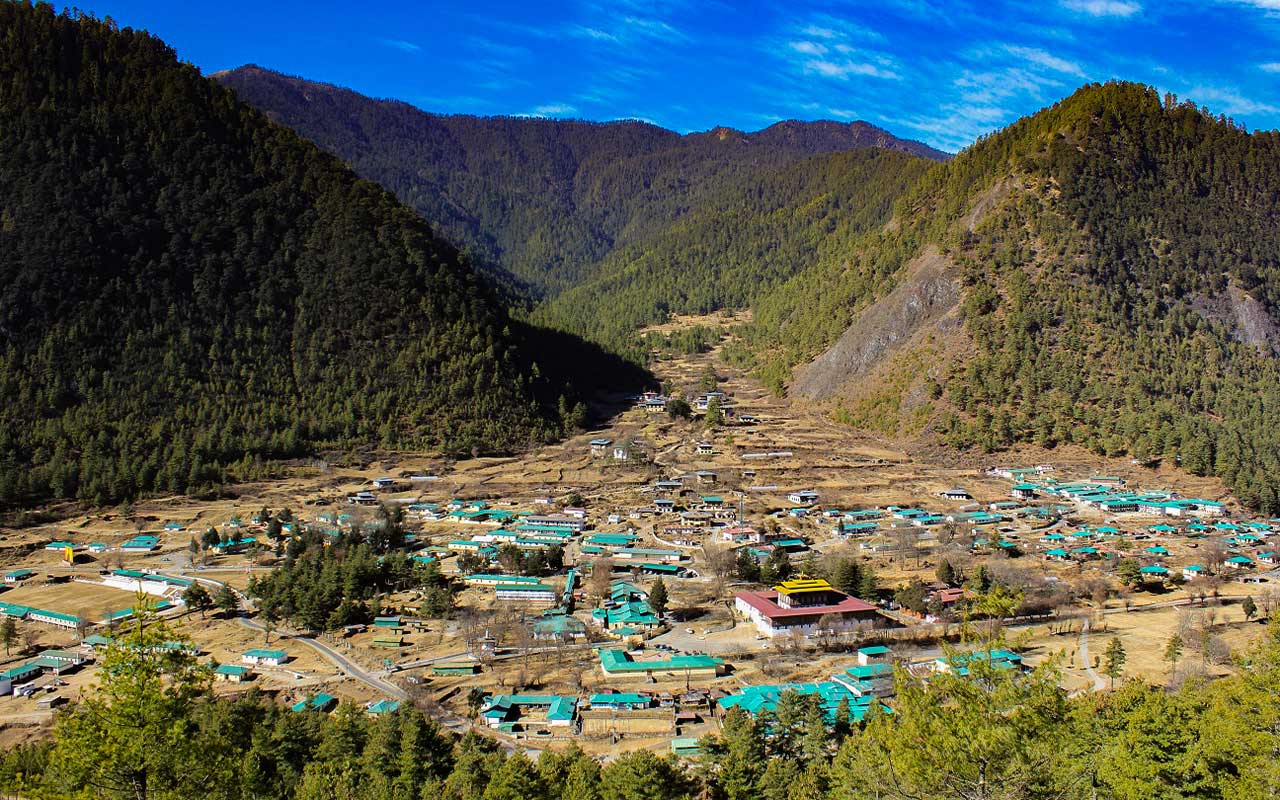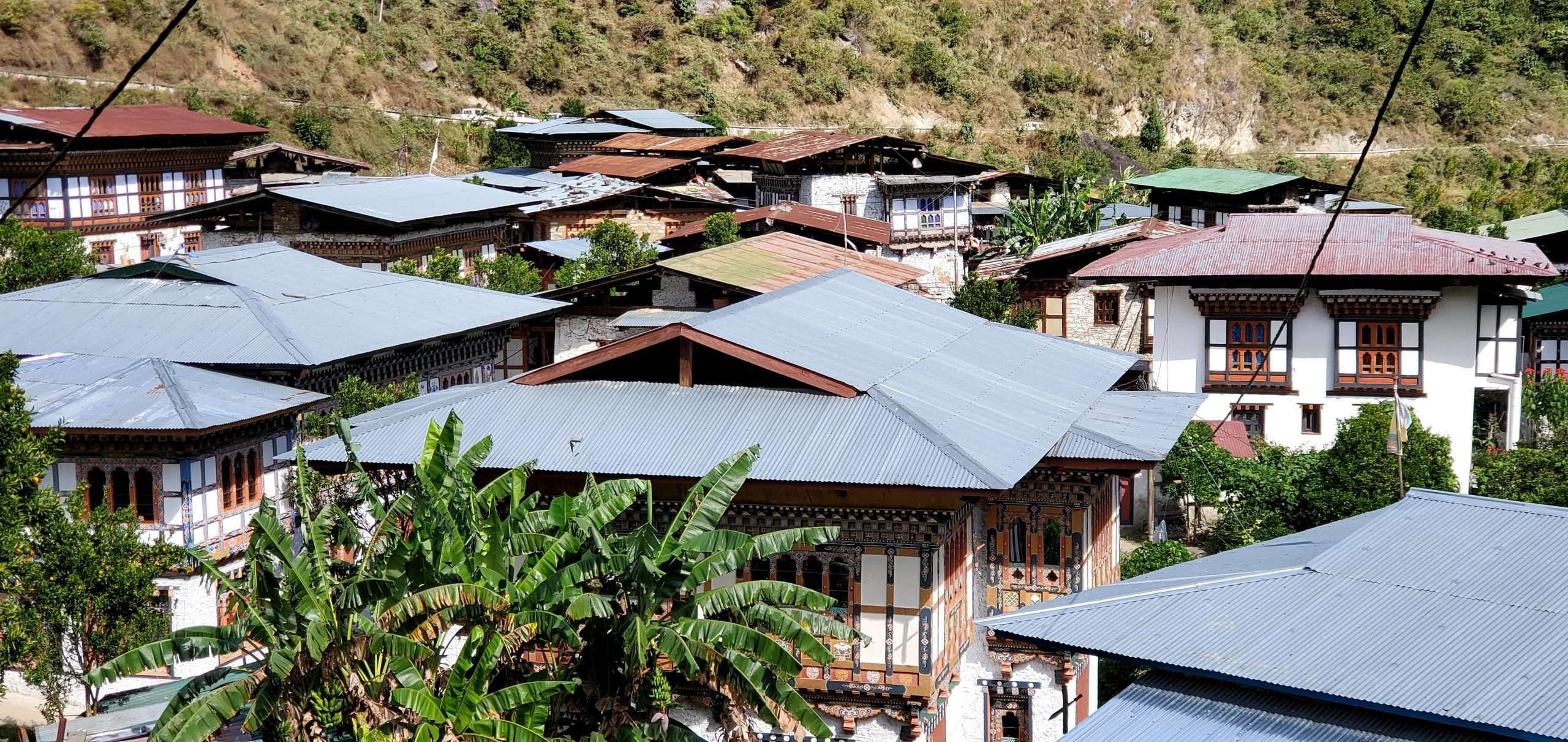Thimphu Sightseeing Places
Thimphu, the capital city of Bhutan, offers a unique blend of modernity and tradition, making it an exceptional destination for travelers seeking to experience the heart of Bhutanese culture. Set in a beautiful valley surrounded by the Himalayas, Thimphu is an ideal base for exploring Bhutan’s rich heritage, stunning landscapes, and vibrant traditions. The city is home to several must-visit attractions that showcase Bhutan’s deep-rooted history and spirituality. One of the most iconic sites is the Tashichho Dzong ...
, a grand fortress-monastery that houses government offices and the King’s secretariat. It’s a majestic structure, with sweeping views of the valley and the surrounding mountains. Another significant site is the Memorial Chorten, dedicated to the third King of Bhutan, Jigme Dorji Wangchuck. This peaceful site is a popular spot for locals to gather for prayer and reflection.
Thimphu is also known for the Buddha Dordenma, a giant statue of Buddha that overlooks the valley and offers panoramic views of the surrounding region. For those interested in Bhutanese culture and art, a visit to the National Institute for Zorig Chusum, where students learn traditional Bhutanese arts and crafts, is highly recommended.
The National Textile Museum is another great place to explore the rich textile heritage of Bhutan, showcasing intricate handwoven garments and the country’s textile traditions. Changangkha Lhakhang, an ancient temple, is also a must-visit, offering a serene environment and beautiful views of Thimphu. With its scenic beauty, spiritual significance, and vibrant cultural experiences, Thimphu offers a diverse and enriching experience for all types of travelers. Whether exploring historical landmarks or immersing in local traditions, Thimphu is a city that truly captures the essence of Bhutan.
Quick Navigation
1. Tashichho Dzong
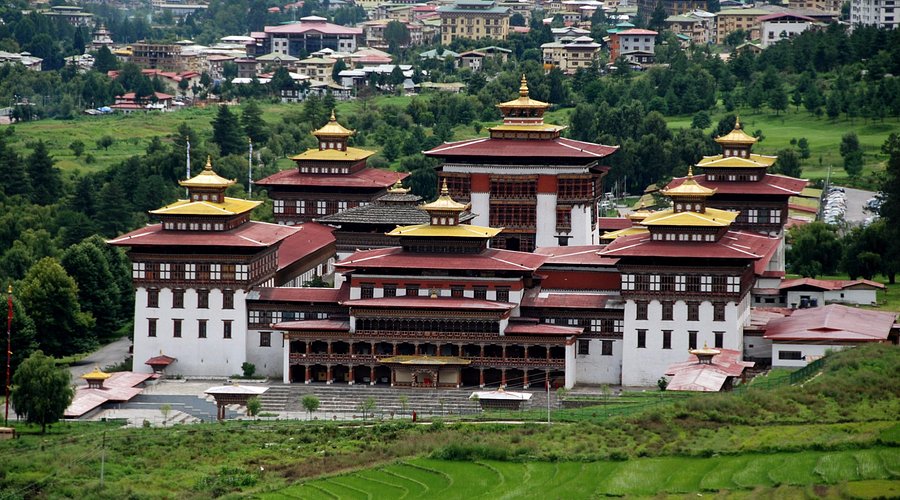 ( Tashichho Dzong is the most visited sightseeing place in bhutan and mostly tourists must visit here )
( Tashichho Dzong is the most visited sightseeing place in bhutan and mostly tourists must visit here )
Tashichho Dzong Sightseeing
Tashichho Dzong, located on the banks of the Wang Chhu River in Thimphu, is one of the most significant landmarks in Bhutan. This fortress-monastery, originally built in 1641 by Zhabdrung Ngawang Namgyal, is an iconic example of Bhutanese architecture. It serves as the seat of Bhutan’s government, housing the office of the king, the ministries, and the central monastic body of Bhutan.
The dzong’s architecture is a striking blend of traditional Bhutanese designs, with massive whitewashed walls, intricately carved wooden windows, and golden-roofed structures that stand out against the backdrop of the lush green hills surrounding it. The building’s central courtyard is a tranquil space where visitors can enjoy the serenity and beauty of the monastery. Inside, the dzong contains temples adorned with beautiful Buddhist murals, statues, and intricate wood carvings that depict various aspects of Bhutanese spiritual life.
2. Buddha Dordenma
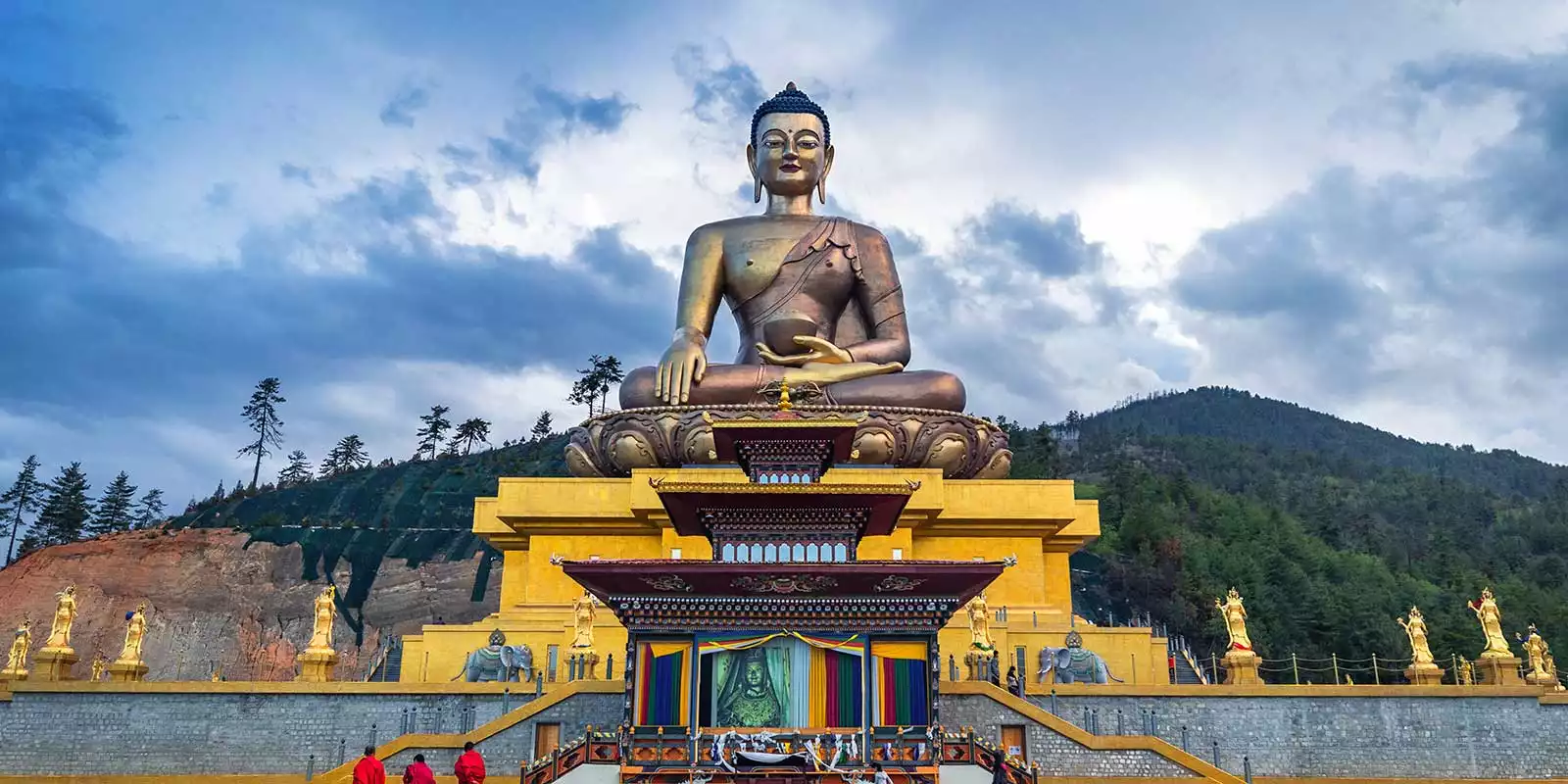 ( Buddha Dordenma is the most visited sightseeing place in bhutan and mostly tourists must visit here )
( Buddha Dordenma is the most visited sightseeing place in bhutan and mostly tourists must visit here )
Buddha Dordenma Sightseeing
The Buddha Dordenma, an imposing statue of Shakyamuni Buddha, is one of the most remarkable landmarks in Thimphu. Standing at 51.5 meters tall, it is one of the largest Buddha statues in the world and is located on a hilltop overlooking the Thimphu Valley. The statue was inaugurated in 2015 and is a symbol of peace, prosperity, and spiritual awakening for Bhutan.
The Buddha Dordenma is made of bronze and is gilded in gold, giving it a radiant and awe-inspiring appearance. Inside the statue, there are thousands of smaller Buddha statues, and the structure itself is home to a meditation hall. The surrounding area has beautiful landscaped gardens, peaceful surroundings, and a panoramic view of the valley below.
3. National Memorial Chorten
 ( National Memorial Chorten is the most visited sightseeing place in bhutan and mostly tourists must visit here )
( National Memorial Chorten is the most visited sightseeing place in bhutan and mostly tourists must visit here )
National Memorial Chorten Sightseeing
The National Memorial Chorten in Thimphu is a prominent religious site and one of the most visited places in Bhutan. Built in 1974 in memory of the third king of Bhutan, King Jigme Dorji Wangchuck, this whitewashed stupa stands as a symbol of peace and a place for people to come together to meditate and pay their respects.
The chorten’s architecture is a unique blend of traditional Bhutanese and Tibetan styles, with intricate paintings, carvings, and statues that depict important Buddhist teachings. The National Memorial Chorten is often referred to as the “center of spiritual life” in Thimphu, as it is a popular spot for locals and visitors alike to engage in prayer, circumambulate, and offer their reverence. Inside the chorten, there are beautiful murals and religious icons that represent the cycle of life and the teachings of Buddha.
4. Changangkha Lhakhang
 ( Changangkha Lhakhang is the most visited sightseeing place in bhutan and mostly tourists must visit here )
( Changangkha Lhakhang is the most visited sightseeing place in bhutan and mostly tourists must visit here )
Changangkha Lhakhang Sightseeing
Changangkha Lhakhang, perched on a hilltop overlooking the Thimphu Valley, is one of the oldest and most revered temples in Bhutan. Built in the 12th century by Lama Phajo Drugom Zhigpo, a renowned Buddhist saint, the temple is dedicated to Avalokiteshvara, the Buddha of Compassion. Changangkha Lhakhang is an important spiritual site and remains a popular pilgrimage destination for Bhutanese Buddhists, particularly parents who bring their newborn children to receive blessings.
The temple’s architecture is traditional and striking, with large prayer wheels, beautiful wall paintings, and carvings of Buddhist deities. The interior of the temple is adorned with intricate murals and a central statue of Avalokiteshvara, which is a focal point for meditation and prayer. The temple offers an impressive view of the Thimphu Valley and is surrounded by lush forests, adding to the sense of peace and tranquility.
5. Tango Monastery
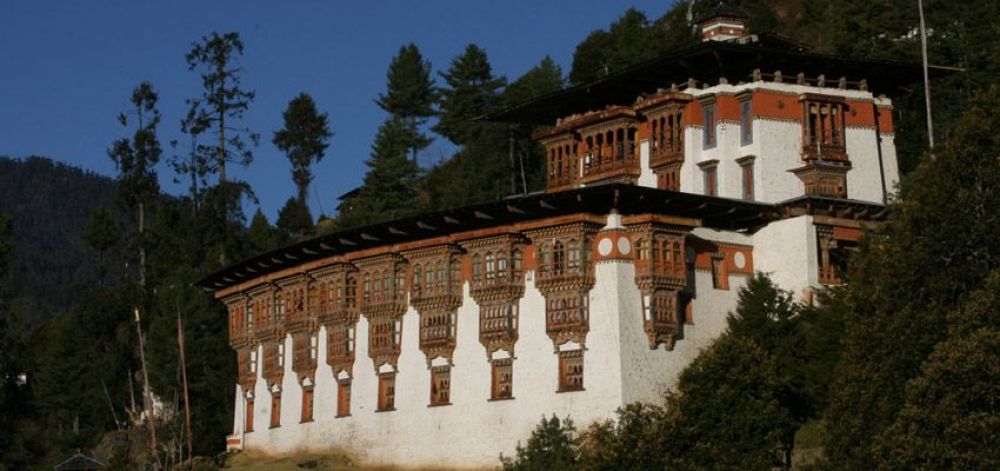 ( Tango Monastery is the most visited sightseeing place in bhutan and mostly tourists must visit here )
( Tango Monastery is the most visited sightseeing place in bhutan and mostly tourists must visit here )
Tango Monastery Sightseeing
Tango Monastery is one of the most revered monasteries in Bhutan, located about 14 kilometers north of Thimphu, perched on a hill in the beautiful Wang Chhu Valley. The monastery, which was founded in the 12th century by Lama Gyalwa Lhanangpa, has become a significant site for Buddhist scholars and practitioners. The name "Tango" comes from the Tibetan word for "horse," as the monastery was historically associated with horses used for religious purposes.
It is a place of profound spirituality, meditation, and monastic learning. Visitors must hike up a steep trail for about an hour to reach the monastery, but the effort is well worth it. The hike provides visitors with spectacular views of the surrounding valley, lush forests, and the majestic mountains. Upon reaching the monastery, visitors are greeted by a striking architectural structure that features traditional Bhutanese designs.
Categories

Request a call back
Our experts would love to create a package just for you!







